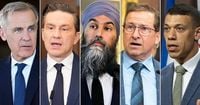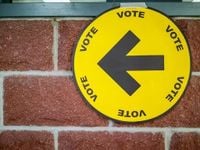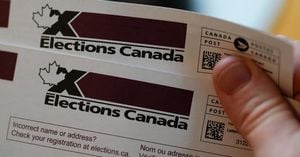As the April 28, 2025, Federal election approaches, Canadians are gaining insight into the positions of major political parties on key issues that could affect their investment portfolios. The upcoming election is shaping up to be a significant moment for voters, especially regarding tax policies and investment strategies.
One of the most talked-about topics is the capital gains tax. Currently, half of the capital gains generated from the sale of equity investments are taxed, a system that has remained unchanged for the past 25 years. In 2024, the Liberal government under former Prime Minister Justin Trudeau sought to increase the taxable amount on annual capital gains over $250,000 to two-thirds. However, the new Liberal Leader Mark Carney has promised to repeal this increase if elected. Conservative Leader Pierre Poilievre has also vowed to reverse the increase, although the Department of Finance has indicated that it would only affect fewer than one percent of Canadians.
While discussions about capital gains tax are crucial, many Canadians are more focused on retirement savings and income tax. Registered Retirement Savings Plans (RRSPs) are a popular vehicle for retirement savings, and any changes to income tax could significantly impact how Canadians manage these funds. Carney has proposed reducing the lowest federal income tax bracket from 15 percent to 14 percent, which he estimates would save a typical two-income family about $825 annually. On the other hand, Poilievre has suggested a more aggressive cut, proposing a tax rate of 12.75 percent at the lowest bracket, which could result in an estimated $1,800 in savings for dual-income households.
Moreover, the Conservatives have promised to exempt an additional $10,000 of income for seniors from taxation, which could provide much-needed relief for older Canadians. Any cuts to income tax would allow families to allocate more funds toward retirement savings, potentially leading to larger contributions to RRSPs, which can generate significant tax breaks over time. However, it is important to note that while RRSP withdrawals are fully taxed as income, Tax-Free Savings Accounts (TFSAs) could be a more attractive option for some investors since gains within them are not taxed.
In a notable move, the Conservatives have pledged to expand TFSAs, allowing Canadians to contribute an extra $5,000 annually, provided the additional funds are invested in Canada. This year, the TFSA limit was raised by $7,000, bringing the total allowable contribution space for individuals aged 18 and older to $102,000 since the account's introduction in 2009. Despite the generous contribution limits, the Canada Revenue Agency (CRA) reports that fewer than 10 percent of TFSA holders contribute the maximum amount, leaving considerable room for investment growth.
However, the Conservative emphasis on a 'buy Canadian' strategy has raised concerns about diversification. With Canadian equities accounting for less than three percent of global equities—two-thirds of which are tied to the finance and resource sectors—investors may find limited options if they strictly adhere to investing within Canada.
In a contrasting approach, NDP Leader Jagmeet Singh has proposed introducing Canada Victory Bonds, which would be exempt from taxation similar to TFSAs if held to maturity for five or ten years, offering compounding rates of 3.5 percent. This rate exceeds the current yield on guaranteed investment certificates (GICs), which also hover around 3.5 percent. Singh's plan aims to allocate funds entirely towards public infrastructure, backed by the Federal government, providing a new savings vehicle for Canadians.
The idea of Canada Victory Bonds harkens back to the days of Canada Savings Bonds (CSBs), which were discontinued in 2017 when yields fell to zero. Many Canadians fondly remember employer-sponsored CSB payroll deduction plans, which served as a tangible way to teach the next generation about savings and the importance of investing in their country's prosperity.
As the election nears, the leaders of Canada’s main political parties are actively campaigning to share their visions with voters. On April 20, 2025, Liberal Leader Mark Carney is expected to hold a press conference in his home riding of Neapan, Ontario, at 1:30 p.m. Conservative Leader Pierre Poilievre will be in Surrey, British Columbia, for a press conference at 8 a.m. Meanwhile, NDP Leader Jagmeet Singh will make an announcement in Victoria at 10 a.m. and later attend the Cowichan Spring Fair at 1:15 p.m. Singh will then travel to Nanaimo for a campaign event at 3 p.m.
Bloc Québécois Leader Yves-François Blanchet is also on the campaign trail, starting his day with brunch at a dairy farm in Saint-Louis-de-Gonzague, Quebec, before heading to Saint-Joseph-du-Lac for lunch with candidates. He is scheduled to appear on Radio-Canada's show “Tout le monde en parle” at 8 p.m. in Montreal.
In contrast, Green Party leaders Jonathan Pedneault and Elizabeth May have no public events scheduled for that day.
As Canadians consider their voting options, the economic implications of each party's proposals will undoubtedly weigh heavily on their decisions. With a focus on tax policies, retirement savings, and investment strategies, the April election could significantly shape the financial landscape for many Canadians.
Ultimately, the outcome of the election will not only determine the direction of Canada’s economic policies but also how Canadians approach their investments and savings in the years to come.







